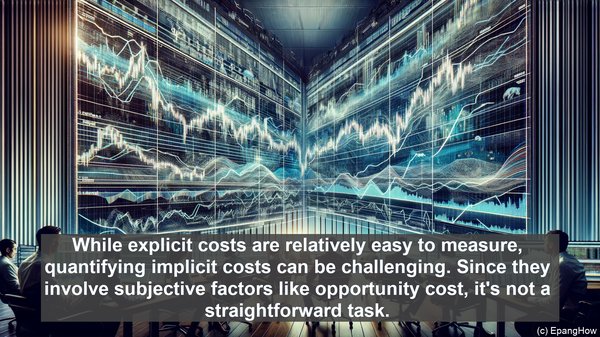Introduction: The Intricacies of Costs
Hello everyone! In the realm of economics, costs play a pivotal role. They are the foundation on which businesses make decisions. Today, we’ll explore two types of costs: explicit costs and implicit costs. While they may seem similar, they have distinct characteristics and implications. Let’s dive in!

Explicit Costs: The Tangible Expenses
Explicit costs are the direct, quantifiable expenses a business incurs. They involve actual cash outflows, such as wages, rent, utilities, and material costs. These costs are explicit because they are easily identifiable and accounted for in financial records. For instance, when a company pays its employees, it’s an explicit cost. These expenses are crucial for day-to-day operations and are often the first ones that come to mind when thinking about costs.

Implicit Costs: The Hidden Factors
Implicit costs, on the other hand, are not as apparent. They represent the opportunity cost of utilizing resources in a particular way. Unlike explicit costs, implicit costs do not involve a direct cash outflow. Instead, they encompass the foregone alternatives or the benefits that could have been derived from the next best option. For example, if an entrepreneur decides to start their own business, the implicit costs would include the salary they could have earned by working for someone else. These costs are often overlooked but are just as significant as explicit costs.
Quantifying Costs: The Challenge
While explicit costs are relatively easy to measure, quantifying implicit costs can be challenging. Since they involve subjective factors like opportunity cost, it’s not a straightforward task. However, acknowledging and considering implicit costs is crucial for making informed decisions. By neglecting them, businesses may underestimate the true cost of their choices and potentially miss out on more lucrative opportunities.
Long-Term Perspective: The Role of Implicit Costs
Implicit costs become even more critical when considering long-term decisions. For instance, when a company invests in research and development, the explicit costs may include the expenses associated with the project. However, the implicit costs would encompass the potential revenue that could have been generated if those resources were allocated elsewhere. By factoring in implicit costs, businesses can evaluate the true viability and profitability of their long-term strategies.
